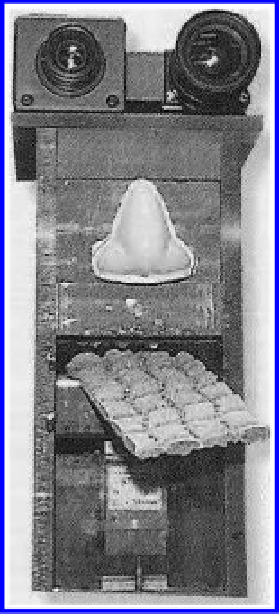Biomedical Engineering Reference
In-Depth Information
Figure 6.13.
An experimental platform showing the electronic head device, where the vi-
sion cameras and mouth chamber can be seen. Reprinted with permission from Magnus
We s t e r b o r n.
applications and other advanced operations can be solved with an artificial hand
comprising only three fingers, e.g. Boivin (2005). The five finger hand however,
has a strong impact on the prosthesis aspect, where the mimicing behaviour of
a human hand is the main concern, e.g. Robertsson (2007). An illustration of a
physical hand as a test platform is shown below in Fig. 6.15. Also in Fig. 6.16, the
implementation of modelling the hand is viewed. Mimicking the human capability
by the hand motion patterns of different grasps with effective finger movements
simulated action is evaluated, in order to make a complete hand action.
The human prosthesis of a mechanical hand still has some important improve-
ments to make. Up to date, a mechanical five finger hand with human related
behaviours challenges the problem of external forces. When a single finger gets in
contact with an unknown object, e.g., a cup of coffee, the contact forces have to be
controlled to achieve such a balance that neither the object nor the finger is dam-
aged. Another issue of importance is the interface between such an artificial five
finger hand and the neural pathways of an user. The interface between neural sig-
nal pathways in the form of chemical impulses and the electrical signals controlling
the artificial hand performance is available as a prototype electronic chip, Sibelius
(2005). The promising mechanical hand concept in connection with an interface









Search WWH ::

Custom Search